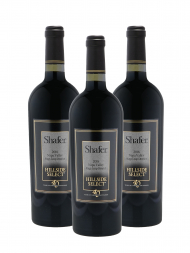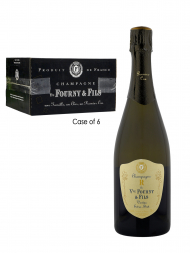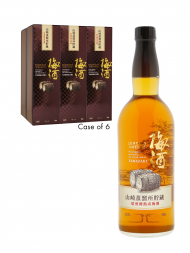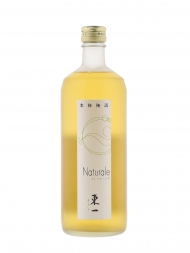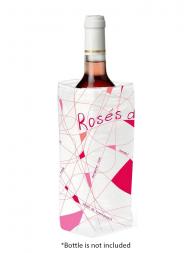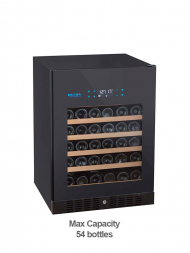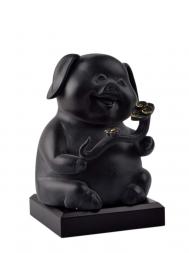10 Things Every Wine Lover Should Know About DRC
1. Nobody does it better
The Domaine de la Romanée-Conti (widely known as DRC, or in Vosne-Romanée, simply "le domaine") is the most famous producer in Burgundy. It has an array of vineyards – and a reputation – that are second to none, not even Domaines Leroy, Georges Roumier or Armand Rousseau. DRC is rightly regarded as one of the world's greatest estates, an opinion supported by the quality and longevity of its wines, as well as the prices they fetch on the secondary market.
Since 2011 the estate's offices and principal barrel cellar have been located close to the church in the center of Vosne-Romanée. Before that, they were in the more modest, but equally discreet, rue Derrière le Four. Given the number of people who would like to taste the wines here, but are politely turned away without an appointment, it's appropriate that DRC sits on rue du Temps Perdu (the street of lost, or wasted time), with its appropriately artistic, Proustian allusions.
2. In search of monks and lost time
The new buildings are on the site of the 11th-Century cellar of the Benedictine Abbey of Saint-Vivant de Vergy, whose order is also commemorated in the name of one of the estate's grands crus, Romanée Saint-Vivant, and which was the owner of what is now La Romanée Conti from 1232 to 1631. "The great strength of Burgundy is that we make wines from terroirs that have been dedicated to the production of great things for centuries," says co-manager Aubert de Villaine. "The monks knew things implicitly that we have had to prove with science."
3. Only grands crus will suffice
DRC owns or leases a total of 27.99 hectares (69 acres) of grands crus in Vosne-Romanée, Chassagne-Montrachet and (since 2009) Corton. In order of size, if not necessarily reputation, the vineyards are as follows: La Tâche (6.06 hectares), Romanée Saint-Vivant (5.29), Echézeaux (4.67), Grands Echézeaux (3.53), Richebourg (3.51), La Romanée Conti (1.81), Corton Bressandes (1.19), Le Montrachet (0.68), Corton Clos du Roi (0.57), Corton Renardes (0.51) and Bâtard-Montrachet (0.17). The last of these, which produces all of two barrels, is only consumed at the domaine. Not a bad house white.
4. What about the premiers crus?
The domaine also has 0.6 hectares of premiers crus in Vosne-Romanée, which are sold off (anonymously) in bulk each year. Somewhat confusingly, since 1999 DRC has also produced a Vosne-Romanée Premier Cru Duvault-Blochet, named after a previous owner of the estate, from time to time. This is a blend of young vines from the six grands crus. To date, the wine was made in 1999, 2002, 2006, 2008 and 2009.

© Tim Atkin | Aubert de Villaine (L) is the public face of DRC, and his nephew Bertrand de Villaine has now joined the estate.
5. Keeping it in the families
Two families have co-owned DRC since 1942. The current representatives of the de Villaine and Leroy/Roch clans are Aubert de Villaine and Henri-Frédéric Roch, whose printed signatures appear on every bottle. Between 1974 and 1991, Lalou Bize-Leroy, the fiery grande dame of Burgundy, was co-manager with Aubert de Villaine, but she left to concentrate on her own domaine and négociant business, following a dispute about the distribution of DRC's wines. Charles Roch, her sister's oldest son, who oversaw the release of the 1990 vintage but died in a road accident in 1992, briefly replaced her, before his brother, Henri-Frédéric, took over.
Aubert de Villaine's nephew, Bertrand, is also working at DRC these days. Nor does the family tradition end there. Bernard Noblet, who has been the domaine's chef de cave since 1985, took over from his own father, André, who spent 45 years at DRC.
6. Everybody loves Aubert
Since Lalou Bize-Leroy's departure, the public face of DRC has been Aubert de Villaine, a humble, charming and highly intelligent man who is acutely conscious of the history of the domaine and the responsibility he bears towards it. De Villaine has other winemaking interests, too. He owns a domaine in Bouzeron in the Chalonnaise, A&P de Villaine, with his American wife, Pamela (which is managed by another nephew, Pierre de Benoist) and is the director of Hyde de Villaine (HdV) in the Carneros district of the Napa Valley. De Villaine was a key figure in the Burgundy's still-ongoing submission to UNESCO for world heritage status in 2012. Less well known is that he was also a member of the mostly French panel of 11 tasters at the legendary 1976 Judgment of Paris, which helped to establish the credentials of top Californian wines.
7. Why are the wines so good?
First and most importantly, it's down to the quality and location of the vineyards. These have benefited from the input of the soil expert Claude Bourguignon since the early 1990s and are now cultivated biodynamically by the chef de culture, Nicolas Jacob. DRC experimented for seven years with biodynamics on seven hectares of vineyard and was sufficiently happy with the results to convert the entire domaine in 2007.
The grand cru zone, as Aubert de Villaine terms it, benefits from "a perfect eco-system" for fine wine production. "The drainage, the pedology, the depth of the soil, the microbiological activity and the way the air moves are all part of that. That's the miracle of Burgundy." Other contributing factors in the vineyard are high-density plantings (10,000 to 14,000 vines per hectare), vine age (the average is around 40 years) plowing, low yields, the use of compost and the unique plant material, much of which was propagated as a massal selection from La Romanée-Conti itself, where the vines remained ungrafted until 1945.
There are no special tricks in the cellar, where the emphasis is on minimal intervention. "The ideal is to do nothing," says de Villaine, "but that is clearly impossible." DRC uses some whole bunch fermentation (the amount varies between 100 percent in great "easy" vintages like 1999 and 2005, and 50 percent in difficult ones like 2004). The yeasts are entirely natural, the extraction of tannins is as gentle as possible and all the wines (apart from the Corton) are aged in new oak. After one use, they are sold off at half price.

8. What do the wines taste like?
At their best, there’s nothing more sublime in Burgundy. One of the pleasures of visiting the domaine is to compare and contrast the different grands crus from barrel and bottle. The structured, almost rigorous Corton – a blend of the three parcels for now – is the outlier, being the only red from the Côte de Beaune and launched in 2009. Echézeaux is generally considered the least interesting of the grand cru reds, but it can be deliciously sweet, succulent and savory. Grands Echézeaux is a step up, lighter and finer than the Echézeaux, and a comparative bargain at DRC. Romanée Saint-Vivant is the most "intellectual" of the grands crus, according to Bertrand de Villaine, underpinned by minerality. Richebourg is extremely perfumed, but also wilder and more unruly than Romanée Saint-Vivant. La Tâche is quieter and more focused than Richebourg, a wine that requires time in bottle to show at its best. La Romanée-Conti is the peak of Pinot Noir: silky, pure, elegant, yet capable of developing in bottle for 40 years or more. And, last of all, Le Montrachet, rarely shown to visitors, is the greatest expression of this legendary white wine vineyard.
9. Scarcity and authenticity
The domaine only produces between 6000 and 8000 cases per year, all of it on precious allocations; La Romanée-Conti rarely yields more than a paltry 500 cases and averages 450 cases. Scarcity means that demand vastly outweighs supply. Prices are high on release – though not as high as they could be, partly because the domaine wants its wines to be enjoyed by consumers, rather than traded by investors – and continue to increase. The 2005 Romanée-Conti currently sells for up to $20,000 per bottle.
The fame of the wines means that counterfeit bottles are all too common, as the recent conviction of Rudi Kurniawan, aka Dr Conti, for fraud illustrated. The domaine itself warns people on its website only to purchase from authorized agents and retailers, but that doesn't stop people ending up with dubious bottles. Or, alternatively, stealing them. The list of wines stolen from The French Laundry restaurant in California in December 2014 included 139 bottles of DRC.
10. Current releases
After a dip in quality at the end of the 1980s and the beginning of the 1990s, DRC has consistently upped its game ever since. The wines aren't cheap, but, in great years, they are exceptional. Of recent vintages, 2010 and the about-to-be released 2012 are the pick of the bunch. The domaine is also capable of producing very good wines in more difficult vintages like 2003, 2011 and 2013, such is the attention to detail and the quality of its vineyards.
Article by Wine-Searcher
类别
| 所有类别 | [29 帖子] |
| 葡萄酒和烈性酒 | [13 帖子] |
| General | [3 帖子] |
| Wine & Liquor | [9 帖子] |
| 一般 | [4 帖子] |




